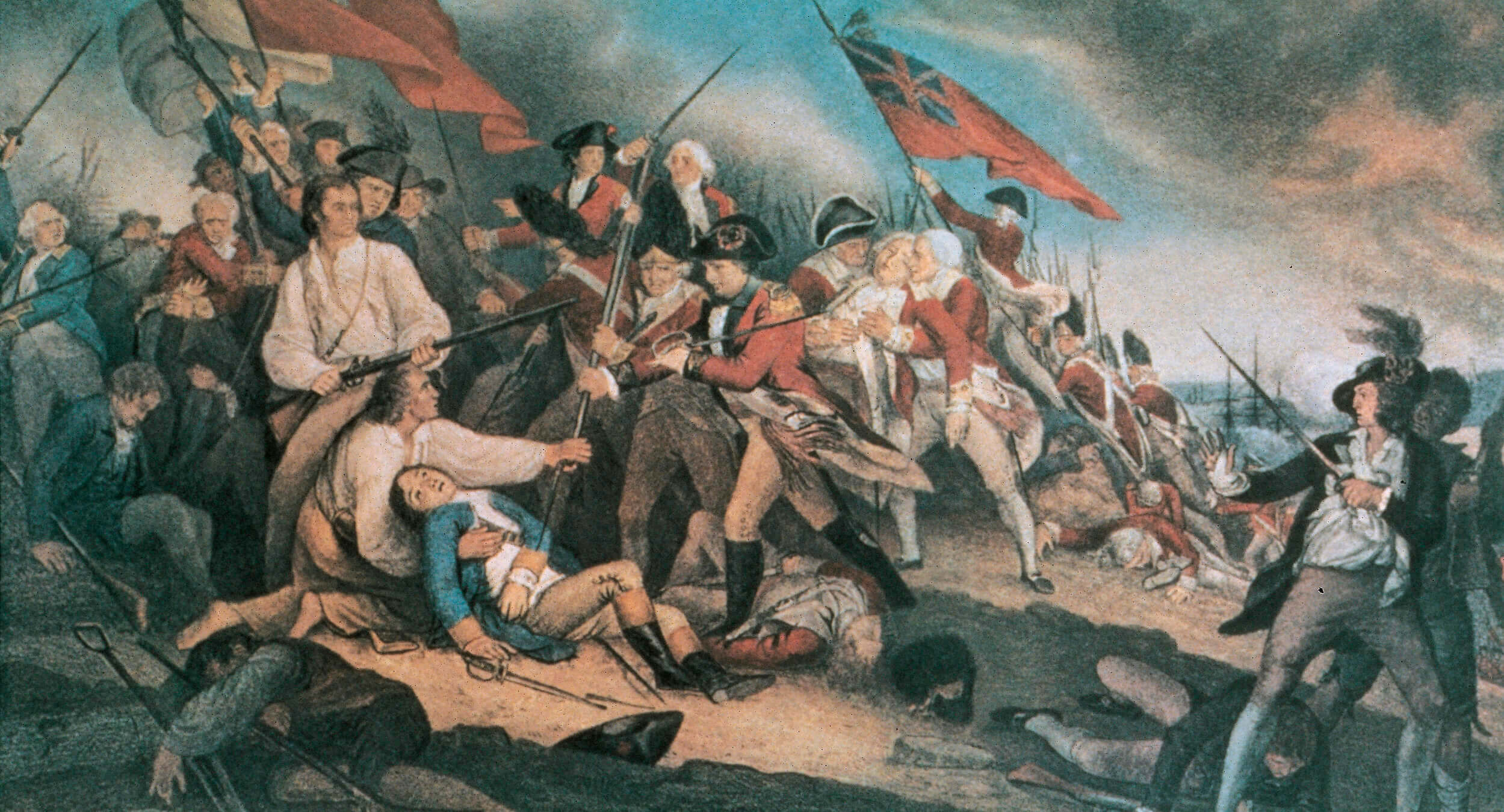Can we still appreciate the sacrifices made for the freedoms we still have and express an appropriate level of enthusiasm for the patriots who made them possible?
A few weeks ago my partner, Kara, and I were given the opportunity to document the family cemetery of Revolutionary War soldier Nathan Carpenter, who fought at Bunker Hill. We received permission from the company that now owns the property to photograph and geotag the graves as part of our long-term project to identify and record the final resting places of all known veterans of the Battle of Bunker Hill, which occurred 246 years ago this week.
This has been a difficult effort for several reasons. First, there is no comprehensive list of soldiers who were engaged in the battle. Apart from a 100-year-old spotty list of New Hampshire soldiers who were at Bunker Hill, I’ve had to comb through muster rolls, local history books, pension applications, and other documents. To date, I’ve identified more than 1,000 confirmed Bunker Hill veterans.
Another difficulty in photographing and geotagging their graves is that following the war, many veterans left New England and began moving west. For instance, Colonel Thomas Hunt is buried at the Jefferson Barracks National Cemetery just outside of St. Louis, where he died on duty decades later. Others are buried in Wisconsin, Michigan, Alabama, Illinois, Indiana, Virginia, Pennsylvania, and my own home state of Ohio.
Getting to know the stories of these founding Americans, with all their triumphs, tribulations, and tragedies, has reminded me of how costly and precious is the legacy all of us as Americans have inherited.
Contrary to the current dominant media narrative, these veterans were not fighting for slavery or white supremacy. In fact, there were dozens of African American and Native Americans, even slaves, who fought at Bunker Hill. Peter Salem, Jude Hall, Barzillai Lew, and many others would later serve in many of the war’s biggest battles.
Soldiers from the Mashpee, Wampanoag ,Hassanamisco, Nipumc, Tunxis, Mohegan, and Pequot tribes were also present at the battle, stationed east of the Breed’s Hill redoubt along the rail fence, where some of the fiercest fighting took place. Half of the Native Americans present at Bunker Hill would eventually lose their lives in service during the war, either in action or to disease.
Massachusetts lost one of their most important Patriot leaders, General Joseph Warren. Warren’s body was one of the few of those killed in action that has been recovered. It was unexpectedly found after the British evacuation of Boston, and identified by his distinctive clothes. Most presumably were buried in a mass grave by the British elsewhere on the battlefield. Sixteen unknown New Hampshire men are buried at the Salem Street Burying Ground in Medford. For most, the Fallen Tablets at the Charlestown Training Ground is their only memorial.
Some of those wounded at the battle bore their wounds for life. Henry Gates of Hubbardston, Mass., was shot through the face during the battle but survived his injuries. He lived another 63 years horribly disfigured, and a town history records that he was known as “twisted-face Gates.”
Captain Joseph Brown’s grave marker at Woodlawn Cemetery in Acton, Mass., notes he was wounded at Bunker Hill, but doesn’t record how he revenged his injury: he saved the musket ball from his wound and fired it back at British troops during the American victory at the Battle of Saratoga two years later.
Women were present at Bunker Hill, too. Fifteen-year-old Mara Sargeant and one of her friends, whose name is lost to history, carried water to the troops in the redoubt and assisted the injured. She later served General and Martha Washington at the army’s headquarters in Cambridge. She eventually married Joseph Grace, another Bunker Hill veteran, and they would move to Pennsylvania, where she died in 1844.
One of the most heartening stories from my research involves the laying of the cornerstone of the Bunker Hill Monument on the battle’s 50th anniversary on June 17, 1825. One hundred and eighty officers and soldiers from the battle were present for the ceremony, with the state of Massachusetts covering their travel expenses to attend the event.
According to one observer, those lined up along the streets watching the parade would erupt in wild cheers as the heroes of Bunker Hill walked by. This took place just months after one of the most divisive presidential elections in American history. Newly inaugurated President John Quincy Adams had watched the battle with his mother from Dorchester Heights.
The challenge for us is whether in our era of fake news, Big Tech censorship, and deep distrust of our political class, we can still appreciate the sacrifices made for the freedoms we still have and express that level of enthusiasm for the patriots who made it possible.





